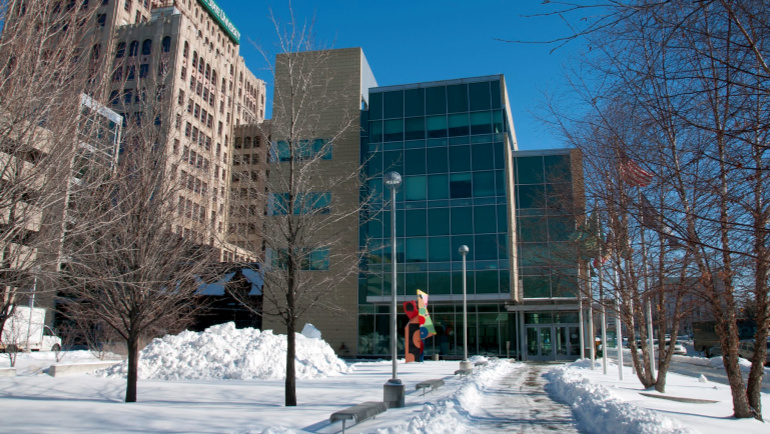
Snowmageddon, Bomb Cyclone and Polar Vortex are slowly becoming part of our lexicon in describing winter weather events. The terms contribute to weather angst, particularly among pedestrians and motorists navigating the slippery sidewalks and roadways.
Not long ago, in 2014, 94 inches of snow fell in Detroit, topping the record 93 inches recorded in 1880-81. The totals were more than double the average seasonal snowfall of 44 inches. November through March of that winter season was the fourth coldest on record, with high temperatures failing to move above freezing.
Weather prognosticators have offered a variety of possible scenarios for Michigan’s 2019-2020 winter conditions, ranging from normal to heavier snowfalls, and milder to colder temperatures.
Farmers’ Almanac — a staple weather source for more than 200 years that boasts an 80% accuracy track record — recently predicted a warmer than normal winter, with above normal precipitation languishing throughout January and into early February. Then, more of the white stuff in March, much like last winter.
Looking more to science, the National Weather Service predicts milder temperatures and below normal snowfall in December and January, while February may be normal precipitation levels.
Accuweather.com — considered a very accurate weather predictor — noted that the upper Midwest and Great Lakes regions will experience several lake-effect snow events, translating into an above-normal season for snowfall.
Despite what source you believe to be reliable, one common refrain is “snow.”
Preparing for winter at Wayne State is a major focus for the Grounds Department of Facilities Planning and Management. Challenges emerge determining how much salt, equipment and staffing will be needed to manage the 200 acres of campus streets, loading docks and building entryways. Decisions are based on both past winter totals and long-range weather forecasts from various reliable sources.
During a typical winter, 450 tons of salt — which costs about $52 per ton — is spread over 15 miles of sidewalks and 350 building entryways. Parking lot snow removal is performed through an outside contractor administered by the Parking and Transportation department.
Equipment inventory used to battle the winter snow and ice is an integral part of preparation, according to Michael Bernal, associate director of grounds services, Facility Planning and Management. Bernal said grounds services has added new machines and equipment during the last two years that specialize in snow removal.
“We’ve purchased two Avant loaders with five-foot power brooms; Kubota UTV’s (utility vehicles) equipped with five-foot Boss v-plows; Boss salt spreaders; liquid deicing tanks and a new Toro Groundmaster track machine equipped with a five-foot v-plow and salt spreader. All of the new machines have different attachments, enabling them for utilization during spring, summer and fall. We have also begun experimenting with liquid deicers, a much more eco-friendly alternative to salt.”
When snowfall is predicted, five to 25 grounds crew members are mobilized throughout the campus, armed with up to 25 snow removal vehicles, snow blowers, shovels, plows and salt, often working 12-16 hour shifts around the clock. Their job is not done until all of the roads and walkways are clear and safe.
“A lot of thought and effort goes into the planning of each snow event, mainly because the weather is so unpredictable. But that never changes the fact that our commitment to the university is to ensure that all students, staff, faculty and visitors can navigate throughout the campus safely during inclement weather conditions,” said Bernal.
Students and employees are asked to report unsafe areas, or areas that require greater attention such as handicap or curb sections, by calling the Facilities, Planning & Management service center at 313-577-4315.
For further information about policies, procedures and safety tips, consult the Snow and Ice Removal Manual. Be sure to sign up for text alerts at broadcast.wayne.edu and be the first to hear about snow days and other emergency updates as soon as they happen.
